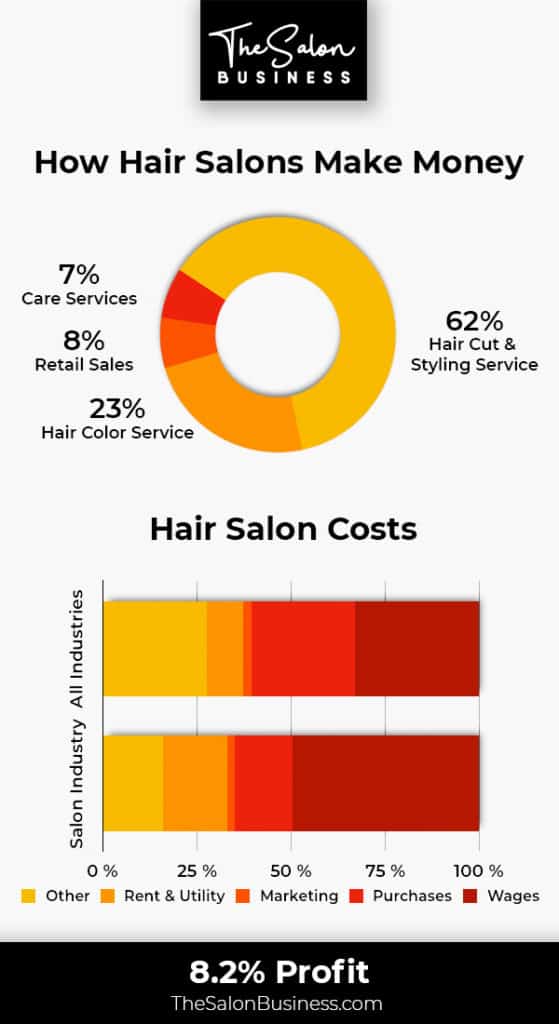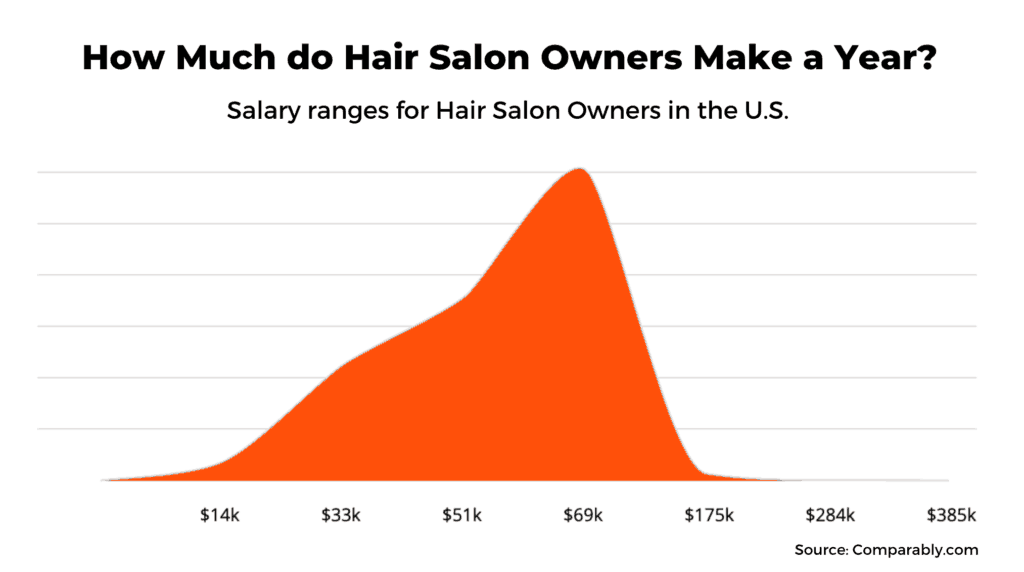Do hair stylists make minimum wage
 make minimum wage do hair stylists make minimum wage](https://www.milady.com/wp-content/uploads/2023/06/average-cosmetologist-salary-by-years.png)
The compensation structure for hair stylists is a subject of considerable interest and often misunderstanding, leading many to question the actual earning potential within the profession. Unlike many traditional employment roles that offer a straightforward hourly wage or fixed salary, the financial landscape for beauty professionals is multifaceted, influenced by a complex interplay of pay models, skill levels, location, and client relationships. While the perception that some stylists earn a wage at the lowest legal threshold exists, the reality is nuanced, reflecting a spectrum of income possibilities ranging from entry-level earnings that may indeed approach the minimum, to substantial incomes for highly skilled and established professionals.
Understanding the various compensation models is crucial for deciphering the financial realities of the styling profession. Salons typically employ several different payment structures, each with its own implications for a stylist’s take-home pay. The most basic model involves an hourly wage, where a stylist is paid a fixed rate for each hour worked, regardless of the number of clients served or services performed. In such scenarios, employers are legally obligated to ensure that this hourly rate meets or exceeds the federal, state, or local minimum wage requirements. For new stylists, or those working in lower-cost areas or budget-friendly salons, this hourly rate might indeed be set at or just above the prevailing minimum wage. This provides a baseline income, offering some financial stability, especially during slow periods or when building a clientele.
However, a significant portion of the industry operates on a commission-based system. Under this model, stylists earn a percentage of the revenue generated from the services they provide. Commission rates can vary widely, typically ranging from 40% to 60% of the service price, sometimes with additional commission on product sales. While this system offers the potential for higher earnings as a stylist’s skills and client base grow, it also introduces a degree of income variability. During periods of low client traffic, or for stylists who are still developing their book of business, commission earnings can be unpredictable and potentially low. Employers are still legally required to ensure that a commission-based stylist’s total earnings, when averaged over a pay period, do not fall below the minimum wage. If commission earnings, combined with any tips, do not meet this threshold, the employer must provide a “wage top-up” to ensure compliance. This safety net is critical, yet it highlights situations where a stylist’s productivity might not be sufficient to generate income significantly above the minimum wage on their own.
Another prevalent model, particularly among experienced professionals, is booth rental. In this entrepreneurial arrangement, a stylist essentially leases a chair or a private suite within a salon, paying a fixed weekly or monthly fee to the salon owner. In return, the stylist operates as an independent contractor, managing their own clients, setting their own prices, and retaining 100% of their service and product sales revenue, after accounting for their rental fee and other business expenses (such as supplies, insurance, and taxes). While booth rental offers maximum autonomy and the potential for very high earnings, it also carries significant financial risk. The stylist is responsible for all aspects of their business, including marketing, client acquisition, and covering their overhead, regardless of their client volume. For a stylist struggling to attract clients or manage their expenses effectively, the net income after all costs could be quite low, even if gross revenue seems respectable. In this model, there is no direct “wage” paid by a salon owner, as the stylist is self-employed, and thus minimum wage laws for employees do not directly apply to their net income. However, their take-home pay could, in effect, be comparable to or even less than minimum wage if their business is not thriving.
Hybrid models also exist, combining elements of hourly pay and commission. For instance, a stylist might receive a lower hourly wage for a set number of hours, plus a commission on services performed beyond a certain threshold or during peak times. These models aim to provide a balance of stability and incentive, but still require careful monitoring to ensure minimum wage compliance.
Several factors beyond the compensation model itself significantly influence a stylist’s income levels. Location plays a substantial role; stylists in high-cost-of-living urban centers or affluent suburbs often command higher prices for services, leading to greater potential earnings compared to those in rural areas or regions with lower economic activity. The prestige and type of salon also matter; working in a high-end, luxury salon typically allows for higher service pricing and attracts a clientele willing to pay more, in contrast to budget-friendly chain salons where prices are kept low to attract a broader market.
Experience and skill level are paramount. Novice stylists, fresh out of cosmetology school, typically start at lower pay rates, often an hourly wage near the minimum, while they build their skills, speed, and client base. As a stylist gains experience, hones their craft, develops specialized skills (e.g., advanced coloring techniques, extensions, bridal hair), and builds a loyal following, their earning potential increases significantly. Established stylists with a strong reputation and a full book of recurring clients can command higher prices and achieve higher commission percentages or maintain a consistently profitable booth rental business.
Clientele size and loyalty are the lifeblood of a stylist’s income. A stylist with a large, dedicated client base that regularly rebooks and refers new clients will consistently generate higher revenue. Effective client retention strategies, excellent customer service, and strong communication skills are essential for building and maintaining this vital asset. Conversely, a stylist struggling to attract or retain clients will inevitably see their income suffer, potentially bringing it closer to the minimum wage threshold.
The role of tips cannot be overstated in the overall income of many stylists. Tips, traditionally a significant component of earnings in the service industry, can substantially augment a stylist’s base pay, whether hourly or commission-based. While tips are not considered part of the employer’s minimum wage obligation (though they can be factored into the calculation for tipped employees in some jurisdictions, allowing employers to pay a lower direct wage, known as a “tipped minimum wage”), they are a direct reflection of client satisfaction and can often double a stylist’s effective hourly rate. However, tips are also variable and depend on client generosity, which can fluctuate.
Economic conditions also exert an influence. During economic downturns, consumers may reduce discretionary spending on salon services, leading to fewer appointments and lower income for stylists. Conversely, during periods of prosperity, salon services are often in higher demand.
In essence, while the starting point for many aspiring stylists might involve earnings at or near the minimum wage, particularly during the initial phase of their career, this is often a temporary stage. The beauty industry is one where ambition, continuous skill development, and strong business acumen can lead to substantial financial growth. The perception that all stylists perpetually earn a wage at the lowest legal threshold often overlooks the dynamic nature of the profession and the significant earning potential that exists for those who invest in their craft and client relationships. Understanding these intricate compensation models and influencing factors is crucial for anyone considering a career in hair styling or seeking to comprehend the economic realities faced by these skilled professionals.
FAQs by do hair stylists make minimum wage
What are common pay structures for hair stylists?
Stylists typically encounter three primary compensation models: hourly wages, commission-based pay, and booth rental. Some salons also utilize hybrid models combining hourly rates with commission incentives.
Can commission-based stylists earn less than minimum wage?
Legally, no. Employers are required to ensure that a commission-based stylist’s total earnings, including any hourly pay and sometimes tips, meet or exceed the applicable minimum wage when averaged over a pay period. If not, the employer must provide a “wage top-up.”
How do tips affect a stylist’s overall income?
Tips are a significant component of a stylist’s total income, often substantially increasing their effective hourly earnings. While tips are not directly part of an employer’s minimum wage obligation (though they can factor into “tipped minimum wage” calculations), they are crucial for boosting a stylist’s take-home pay.
What factors contribute to lower earnings for stylists?
Factors contributing to lower earnings include entry-level experience, a small or inconsistent client base, working in lower-priced salons or regions, and economic downturns that reduce client spending. For booth renters, high overhead costs and insufficient client volume can also Mom Hairstyles The Evolving Landscape Of Practical Elegance lead to low net income.
Is salon ownership a path to higher income?
Salon ownership offers the potential for significantly higher income through profit sharing and managing other stylists. However, it also involves substantial financial investment, operational responsibilities, and business risks that can impact overall profitability.
Tips by do hair stylists make minimum wage
Strategies for increasing earnings:
Consistent skill development through advanced education and workshops is crucial. Building a loyal client base through exceptional service, effective communication, and personalized experiences directly translates to higher rebooking rates and referrals. Proactive self-promotion and marketing efforts, both online and offline, can expand reach and attract new clients.
Importance of financial literacy and understanding contracts:
Thoroughly understanding compensation agreements, including commission structures, hourly rates, and any associated deductions, is essential. For booth renters, a clear grasp of lease agreements, operating costs, and tax obligations as an independent contractor is vital for financial planning and profitability.
Consideration of specialization:
Developing expertise in high-demand or niche services, such as advanced color techniques, hair extensions, or bridal styling, can allow for premium pricing and attract a more affluent clientele, thereby increasing earning potential.
Networking within the industry:
Building connections with other professionals, attending industry events, and participating in local beauty communities can open doors to mentorship, collaborative opportunities, and client referrals, contributing to career growth and increased income.
Building a professional portfolio:
A strong visual portfolio showcasing diverse skills and high-quality work is an invaluable tool for attracting new clients and demonstrating expertise, especially when seeking positions in higher-end salons or negotiating better commission rates.
Conclusion by do hair stylists make minimum wage
The inquiry into stylist compensation reveals a complex economic landscape rather than a simple binary answer. While it is accurate that some stylists, particularly those in entry-level positions or during periods of low client volume, may find their earnings hovering near the legal minimum wage, this is not a universal or permanent state for all professionals in the field. The industry is characterized by diverse compensation models—hourly, commission, booth rental, and hybrids—each presenting unique opportunities and challenges. A stylist’s income is profoundly influenced by their experience, skill level, the size and loyalty of their clientele, the salon’s prestige, geographic location, and the broader economic climate. Tips also play a significant, often indispensable, role in augmenting base earnings. Ultimately, the potential for financial growth within the styling profession is substantial for those who commit to continuous learning, master their craft, cultivate strong client relationships, and approach their career with a strategic, business-minded perspective. The initial starting point for many may be modest, but the trajectory for advancement and increased earning capacity is clear for dedicated and skilled individuals.







More suggestion: What Are Bangs In Hair Styling